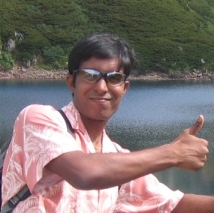
I attended the 4th Annual conference of Japanese Society for Molecular Imaging (JSMI) held on 14th and 15th May 2009 at Tokyo, Japan. The conference venue was National Science Center located in the heart of Tokyo city, a few minutes walk from Tokyo station.
This was my third time to attend the JSMI meeting. It was quite overwhelming to see increased interest among the medical research fraternity as I could come across people not only working in optical/nuclear medicine based molecular imaging but also physicians from diverse background such as neurology, oncology or cardiology.
The first day began with symposium sessions on Activatable probes and Small animal imaging. The kickoff lecture on Activatable probes was given by Dr. Urano of Tokyo University, who discussed the recent developments of his key pH activatable probe called “TokyoGreens”. Although the topic was familiar to me as he had given a seminar at BIRC in the past, it was worth knowing the recent updates on it. Specifically, the activatable fluorescence of intestinal epithelial cancer cells in vivo probed with TokyoGreens was quite interesting. A lecture from Dr. Tobita of Gunma University on using phosphorescence of Iridium complexes seemed to be an interesting strategy to image hypoxic tumors. The accumulation of Iridium complex called BTP could be visualized for tumor phosphorescence and compared with FDG-PET in various tumor models implanted in mice. Dr. Ozawa from University of Tokyo discussed about imaging protein-protein interactions based on reconstitution of split GFP and split luciferases attached to target proteins following activation by mRNA or drugs that can act on such proteins. In particular, cross complementation using different luciferase domains could be achieved for multispectral evaluation of in vitro studies. In addition, in vivo detection of smads protein interaction and caspase-3 activity were also evaluated. In the Small Animal Imaging session, Dr. Hasegawa lectured about induction of iron-binding ferritin heavy chains in mesothelioma that could be imaged by MRI and its application as a reporter gene for cancer gene therapy. A presentation was made by Dr. Ikawa on imaging of oxidative stress in Parkinson disease patients using 62Cu-ATSM PET. The accumulation of 62Cu-ATSM was well confined to striatum of PD patients, but varied with the progression of the disease.
The keynote lectures were given on the second day by Drs. Dean Sherry and Samuel Achilefu, both from USA. Dr. Sherry talked about the MR sensors of metabolism using lanthanide complexes as CEST and PARACEST agents. It was interesting to note that water exchange in Eu3+ based PARACEST systems is extraordinarily sensitive to the chemistry of the side chains. In vivo MRI was performed using different Eu3+ derivatives including polymeric PARACEST contrast agents for sensing glucose metabolism or to assess NADH activity. In addition, the potential of utilizing hyperpolarized 13C metabolites of lactate and pyruvate were discussed to image specific metabolic processes by MRI in prostate tumors and ischemic heart disease respectively. Dr. Achilefu lectured on utility of optical molecular probes for molecular imaging in tumors. He gave a brief overview of different optical imaging techniques based on flip-flopping contrast mechanisms. In particular, Fluorescent lifetime imaging probes which are pH sensitive and facilitate integrin binding were discussed in detail. Also molecular radionuclear-optical toggle based on a new MOMIA concept to monitor caspase-3 activity was mentioned. It included designing a new NIR fluorphore system that fluoresces differently under the influence of metallic chelates of Cu, Zn and Ni, which are formed as radioactive decay products of 64Cu. This synchronization of radionuclide decay and fluorescence enhancements could be utilized for simultaneous evaluation of a biologic activity, in this case of Caspase-3, using PET-OI dual imaging systems. The use of such probes in combination with nanoparticles could push application of optical molecular imaging technologies to human clinical trials in near future.
My poster on intratumoral distribution of Cu-ATSM and FDG was scheduled for presentation on the second day of the meeting. Some physicians including neurologists as well as PET researchers working on Cu tracers did stop-by and took a keen interest in discussion. Few questions were posed regarding the retention mechanism of the Cu-ATSM and the reasons for differential accumulation pattern in lung cancers.
Few other oral sessions and posters were also interesting but couldn’t comprehend completely due to language barrier. Overall, the 4th JSMI meeting was a good learning experience and also provided opportunity to reunite with old friends and make new ones.

No comments:
Post a Comment